Some of the people heading in and out of labs in Sweeney Hall and the BioRenewables Complex during the summer months aren’t typical students – but then, the programs that brought them here aren’t typical either. Once again this summer the Department of Chemical and Biological Engineering joined other university departments in the Research Experiences for Teachers (RET) and Young Engineers and Scientists (YES) programs.
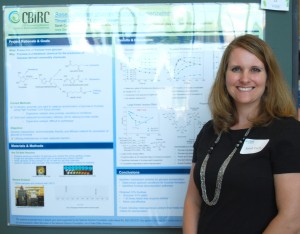
The two-pronged program opens doors at Iowa State to both high school educators and the young students they educate – all in the name of spreading the love of a strong education. RET places high school educators with ISU faculty members to perform hands-on research activities and take part in personal development training with other high school teachers. In the case of the Department of Chemical and Biological Engineering, the experience helps develop a first-hand knowledge of the world of chemical engineering; and introduces instructors to the value of scientific inquiry in the context of their high school STEM (Science, Technology, Engineering and Mathematics) practices. It also provides experiences they will be able to take home to their students to foster their interest in science and engineering. Requirements include developing classroom materials based on their summer research experience. The program lasts for seven weeks.
Its counterpart, YES, teams 11th and 12th grade students with an interest in biorenewable engineering with CBE faculty mentors for similar hands-on experience and other in-depth learning activities to enhance their appreciation for academic and career opportunities in engineering; to provide ideas thatcan be developed into material for science and technology fairs; and to obtain independent school credit. The YES program encompasses six weeks, and also has a 16-week academic year option.
Both programs have been in existence for more than ten years and for CBE are managed through the university’s NSF Engineering Research Center for Biorenewable Chemicals (CBiRC). Both are funded by the National Science Foundation, and the RET program is also funded through the U.S. Department of Agriculture.
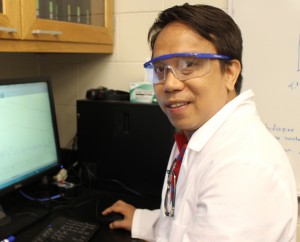
Chemical and Biological Engineering faculty who mentored instructors and students included Dr. Kaitlin Bratlie, Dr. Rebecca Cademartiri, Dr. Eric Cochran, Dr. Andy Hillier, Dr. Laura Jarboe, Dr. Matthew Panthani and Dr. Jean-Phillippe Tessonnier.
One of the RET participants was a long way from home. Gil Baguio, who teaches science classes at the Baltimore, MD City Detention Center, was one of two instructors from outside Iowa who took part in this year’s program; and the fact that he works with youth who have been incarcerated makes him one of the more unusual participants. He faces many unique challenges in his position; his students are different ages, with many different levels of education and learning requirements. Some are special needs students. But law dictates their education must continue while incarcerated. He is the only science teacher in the facility and has large class loads.
Baguio, who teamed with Matthew Panthani, said the RET program at Iowa State far exceeded his expectations: “I never thought it would be this great. This has been awesome,” he firmly stated. “It seems like seven weeks is a long time,” he said, “but when doing research projects, it’s actually not long enough. The time flies by.” He said the scheduled interaction sessions between the high school teachers taking part in the program through the College of Engineering are very beneficial: “The collaboration in the professional development meetings is very helpful to us and it builds a good bond between us. This experience has helped my global understanding of science and will help me in the many different curriculums I have to employ with my many students in Baltimore. I am very privileged,” he said.
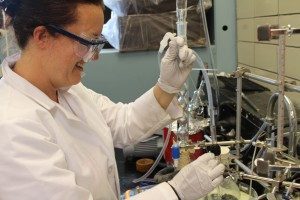
Melinda Hamann, an Iowa State alum who teaches chemistry and AP physics at Des Moines East High School, was back for a second round of the RET program. She completed her first one under Laura Jarboe four years ago and was teamed with Eric Cochran’s research group this time. “This experience is great – it allows me to put my learning hat back on and it’s good to do something outside of what I do in the classroom,” she said. Like Baguio, she praised the opportunity for interaction among peers and university researchers in the program: “The main reason I came back again was for the professional development aspect. It really helps in the classroom by learning about what is going on in research and what other people are doing.” And she said she’d recommend it to any other instructors: “It’s a commitment, but it’s well worth it.”
Karl Goldsmith, who received a master’s degree from Iowa State in 2009, teaches chemistry, organic chemistry and coaches robotics at Valley High School in West Des Moines. He completed his third stint with the program this summer, working with the research group of Chemical and Biological Engineering chair Dr. Andy Hillier. He said he enjoyed the collaborative spirit that fostered advancement. “They were really open to suggestions and willing to assist me in learning new techniques. I have prior experience in lab work, but each lab provides its own unique challenges. This lab had me brushing up on my physics.”
And Goldsmith said the program is excellent for recharging a teacher’s batteries: “Working in a research lab always reminds me of the little details in science and where it can take us. When teaching in a high school, you have to spend a lot of time on the basics. While interesting to the students, as a teacher, it can feel as if you are not doing science. This program re-energizes that thought process and helps me to be more creative in how I address my students so they too will get a more authentic view of science.”
High school students also sometimes sign up for additional rounds with the program. Ames High’s Nathan Chen participated in the YES program in the fall of 2014 and came back this summer, working with associate scientist Austin Hohmann through the Cochran group. Chen, who worked on a project involving polymerization of materials for use as a component of asphalt, has a great appreciation for the value of the program: “Considering I’m entering my final year of high school, I’m way ahead in many ways. It’s great for confidence. Slowly, over time, I’m learning how to do lab activities that college juniors and seniors perform.” Chen said the experience has opened his eyes to what is available for his college education right in his own back yard. “When I first started this program, I really wasn’t sure what I wanted to do with science in the future,” he said. “After spending time with this program and having an inside knowledge of what’s available here at Iowa State, chemical engineering is definitely an interest I now have as a career option; and if I decide to do it here at Iowa State, I have an upper hand on jumping right in.”
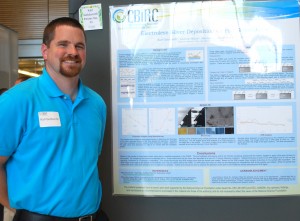
“Jumping in” can also certainly be said of Boone High School student Benjamin Clark, who worked this summer with Laura Jarboe’s research group and graduate assistant Kirsten Davis. He was involved with three different projects, including one that could conceivably get him billing as one of the researchers in a published document. It’s an idea Clark likes: “To think that as a high school student I might have my name on a published research project is just crazy!”
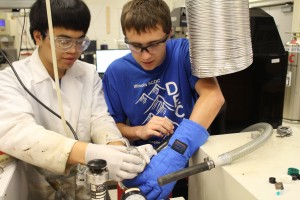
Two of the three projects involve lignin, an organic substance that binds cells, fibers and vessels that help constitute wood and plants. The project that could see publication involves using emulsification (a dissolving process) to turn lignin to pyruvate (pyrolytic acid), which can be used to make chemicals more cost-efficiently. But he said his favorite project involved using a by-product of biofuel to create synthetic vanilla.
Clark said spending hours working in a state-of-the-art lab at Iowa State has been a great experience: “Before this opportunity I only had small-scale lab experience, so learning the ropes in this major lab has been great.” And he said though intimidating at first, a philosophy of “get in there and do it” with the lab equipment has paid dividends: “I know now I can work in any lab and be useful and feel confident, and I’m not even out of high school.” And the lab hands-on experience wasn’t the only thing he said he values. He reported the general treatment by everyone at the university – including faculty and graduate students – has been excellent. “They really involve us, and everyone is really easy to talk to and really helpful. They even had me sit in on a meeting that I wasn’t scheduled to be part of and even that helped me to see what it would be like working in a lab like this,” he commented. Clark has developed an interest in biomedical or regenerative engineering and said grad student Davis put him in touch with people who could help him learn more about that area. “I always knew I wanted to go to ISU, but after this, I know I want to be with THIS group, because the people here are great.”
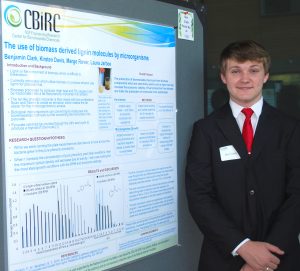
Jarboe, Clark’s mentor, stressed the value of the head start the YES program offers on so many levels. “Myself, I never even did any research until I was a grad student,” she said. “So this program is so beneficial to students to give them a huge head start while they are still in high school.” She said participants also learn the hard work side of scientific research, such as “when questions in research arise that don’t have easy answers – and the students are on their own to find out those answers,” adding, “Sometimes it is the failed experiments and dead ends that go directly into the mix for getting the experiment right.”
For both the teachers and the students, the programs wrap up with a reception and poster presentation, where the participants prepare a visual display summarizing the work they were involved in – a common practice found in the scientific world.
Much like the thrill of getting an experiment right that Jarboe referred to, Iowa State’s RET and YES programs are a mix that that the university has gotten right for many, whether and students or as educators.
To learn more about the programs in the Department of Chemical and Biological Engineering, contact Stacy Renfro, Center for Biorenewable Chemicals, srenfro@iastate.edu.